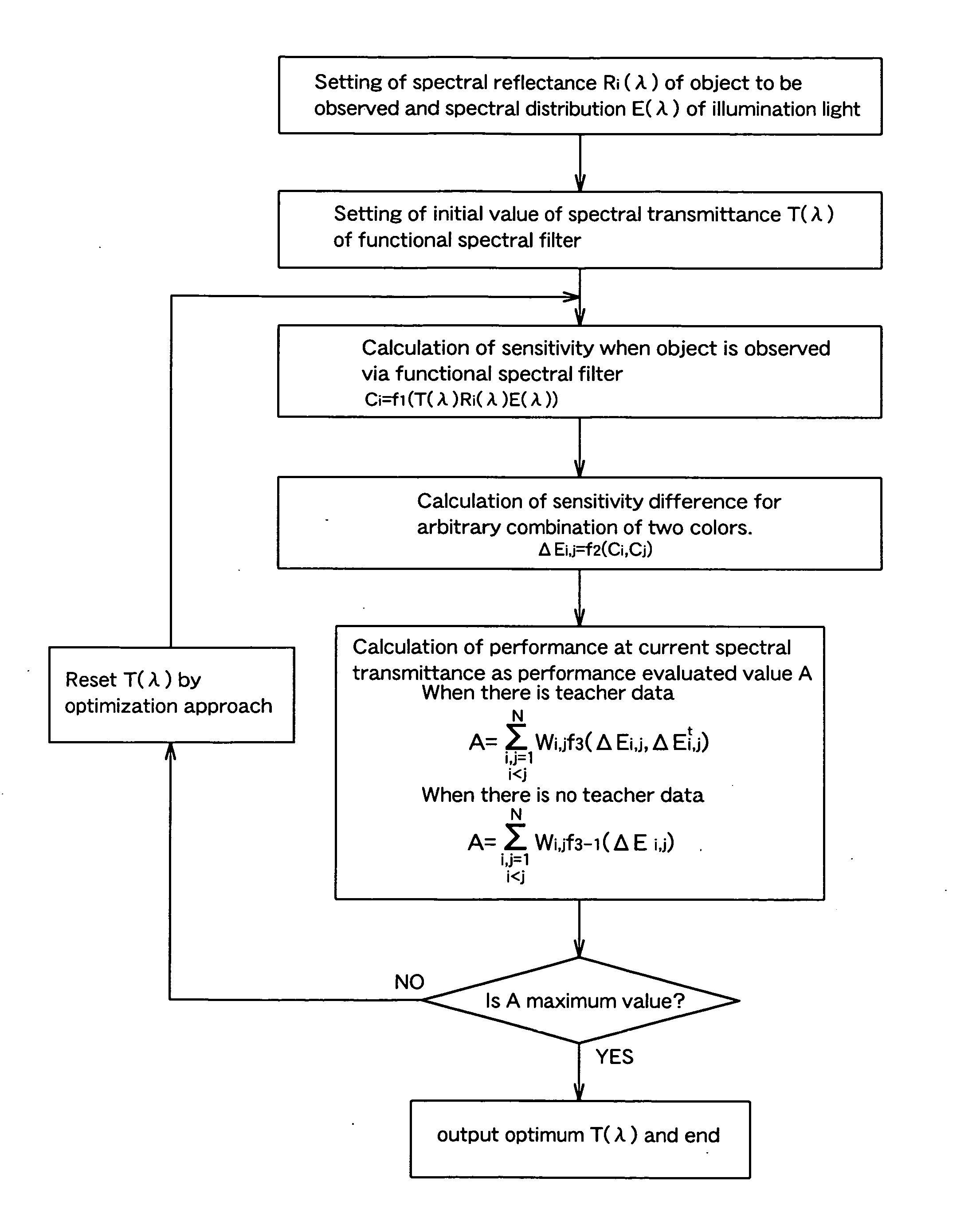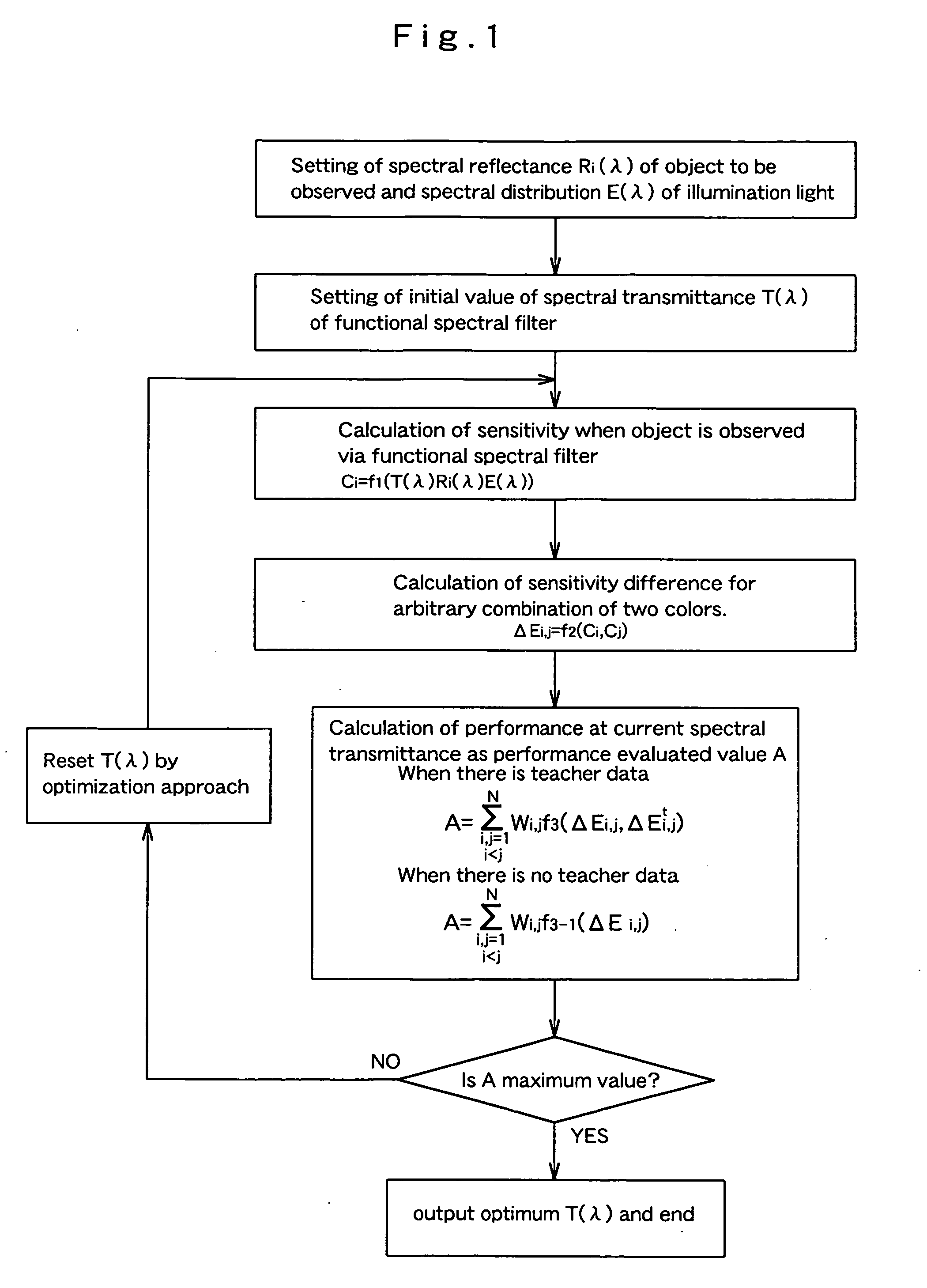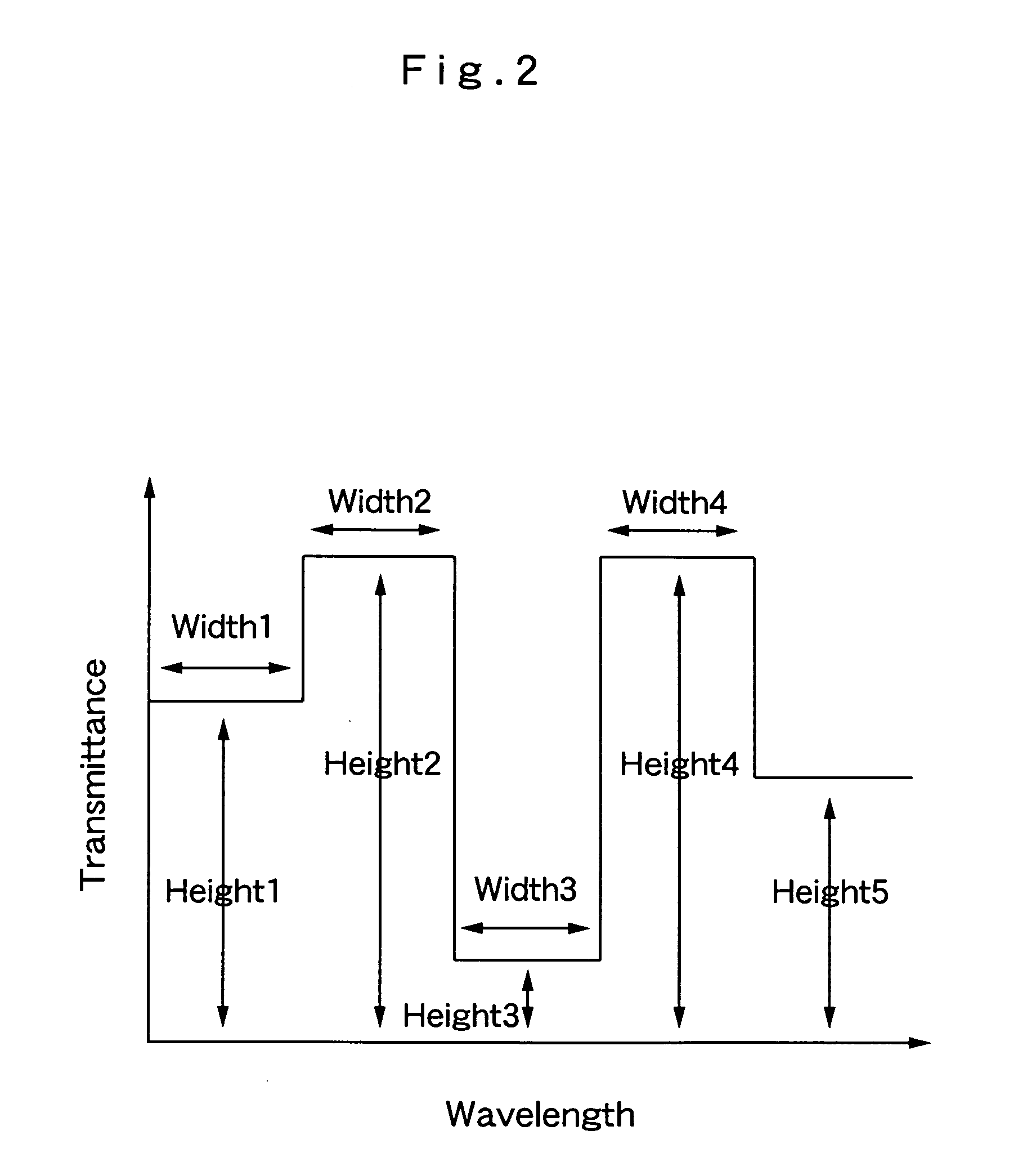Method for Forming Functional Spectral Filter
a functional spectral filter and filter technology, applied in the field of functional spectral filtering, can solve the problems of color deficient observers, difficult to differentiate, and difficult for protanopes and deuteranopes to sense a difference between the colors in a combination of red and green
- Summary
- Abstract
- Description
- Claims
- Application Information
AI Technical Summary
Benefits of technology
Problems solved by technology
Method used
Image
Examples
example 1
[0148]The present example relates to a method for forming a filter through which it is possible to understand inconveniences in distinguishing colors for a color deficient observer, but also which can be introduced in a workflow in a practical work.
[0149]16 colors in a D-15 color rendering-index (N=16) commonly used for color vision tests have been regarded as colors of an object to be observed (specified colors, i.e., an object color group), and a D-65 serving as a standard light source has been used as an illumination light.
[0150]A visible light wavelength band (λ=380 to 780 nm) is divided into five intervals as shown in FIG. 2, and by use of a step function consisting of nine parameters (of widths: 4+heights: 5) which are composed of the respective wavelength intervals (widths) and the transmittances (heights) corresponding to the respective wavelength intervals, a spectral filter model is described as T(λ)=T(p1, p2, . . . , p9). These parameter values are limited within a range ...
example 2
[0175]The present example relates to a method for forming a functional spectral filter through which it is possible to make it easy to distinguish specified colors by the color deficient observer wearing the filter.
[0176]In the same way as in the example 1, 16 colors in a D-15 color rendering-index (N=16) have been regarded as colors of an object to be observed (i.e., an object color group), and by using a D-65 serving as a standard light source, a color difference ΔEDi,j of a color deficient observer has been determined by use of a spline function model with the number of parameters 16.
[0177]Note that the spline function model used as a spectral transmittance model for the spectral filter is represented by the following formula 17.
[Formula17]T(λ)=∑k=116pkBk(λ),whereBk(λ)={{ω3+3ω2(ω-λ-λk)+3ω(ω-λ-λk)2-3(ω-λ-λk)3} / 6ω3:whenλ-λk≤ω(2ω-λ-λk)3 / 6ω3:whenω≤λ-λk≤2ω0:when2ω≤λ-λk}
[0178]Here, a visible light wavelength band 380 to 780 nm is an analysis object, λk is set so as to range from 350 to...
example 3
[0188]The present example relates to a method for forming a spectral filter through which a difference in a specific color group is enhanced.
[0189]As a concrete example for designing a functional spectral filter through which a color difference with respect to a color combination specified in advance is made large or made small, a spectral filter to distinguish between greens of leaves of natural plants and greens of artificial leaves is prepared.
[0190]First, given that greens of leaves of natural plants have been set as an A group, greens of artificial leaves have been set as a B group, and a total of six colors of three colors randomly selected respectively from the A group and the B group have been regarded as colors of an object to be observed (that is, an object color group), a spline function model with the number of parameters 23 is used by use of the spectral distributions of the respective reflected lights.
[0191]Because the present example is a case in which there is no tea...
PUM
 Login to View More
Login to View More Abstract
Description
Claims
Application Information
 Login to View More
Login to View More - R&D
- Intellectual Property
- Life Sciences
- Materials
- Tech Scout
- Unparalleled Data Quality
- Higher Quality Content
- 60% Fewer Hallucinations
Browse by: Latest US Patents, China's latest patents, Technical Efficacy Thesaurus, Application Domain, Technology Topic, Popular Technical Reports.
© 2025 PatSnap. All rights reserved.Legal|Privacy policy|Modern Slavery Act Transparency Statement|Sitemap|About US| Contact US: help@patsnap.com



